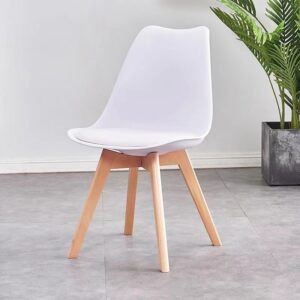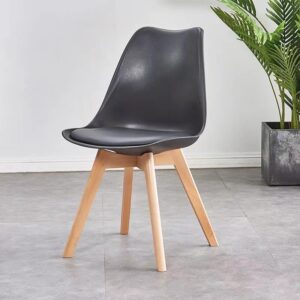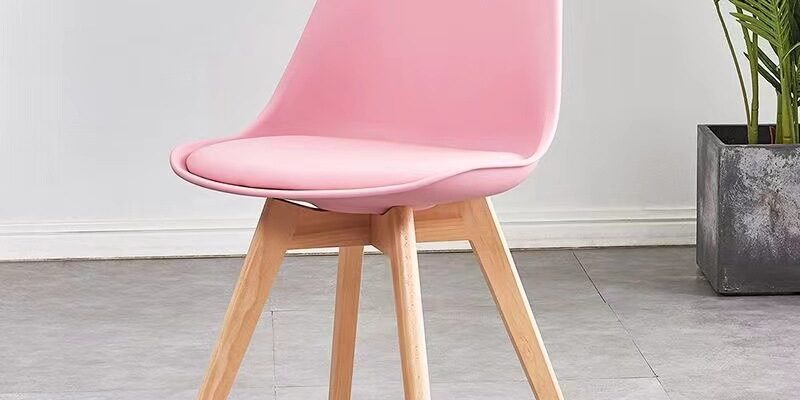Here’s a blog post outline for “Choosing an Office Chair for Your Home Office: What to Consider”:
Introduction:
Whether you’re working from home full-time or just need a comfortable chair for occasional use, choosing the right office chair is essential for both productivity and comfort. An office chair that supports your posture and aligns with your workspace can make a huge difference in your daily comfort. In this guide, we’ll break down the key factors you should consider when selecting an office chair for your home office.
1. Why the Right Office Chair is Important
The right office chair is more than just a place to sit; it’s a tool that can boost your productivity, improve your posture, and reduce discomfort during long work hours. Poorly designed chairs can lead to:
- Back pain: Lack of lumbar support or poor posture can strain your back.
- Neck and shoulder discomfort: Incorrect chair height or inadequate armrests can lead to tension in these areas.
- Fatigue: An uncomfortable chair can cause fatigue, making it harder to focus on tasks.
A well-chosen office chair, on the other hand, will support your body, keep you comfortable, and help you stay focused throughout the day.
2. Key Factors to Consider When Choosing an Office Chair
1. Ergonomics: The Foundation of Comfort
Ergonomic design is crucial for any office chair. An ergonomic chair is specifically designed to support your body’s natural posture, reducing strain on your back, neck, and shoulders. Look for the following ergonomic features:
- Lumbar Support: Adjustable lumbar support helps maintain the curve of your spine, reducing the risk of lower back pain.
- Seat Depth and Height: A good chair allows you to adjust the seat to fit your body’s proportions. You should be able to sit with your feet flat on the floor and knees at a 90-degree angle.
- Adjustable Armrests: Adjustable armrests can help reduce shoulder strain and provide more support while typing or using a mouse.
- Recline and Tilt: A chair that reclines slightly helps distribute your body weight more evenly and provides relief during long hours of sitting.
2. Comfort and Padding
You’ll be spending a lot of time in your office chair, so comfort is key. Chairs with more padding or memory foam cushions are often more comfortable for extended sitting. Keep in mind:
- Seat Cushioning: A thick, padded seat cushion can make sitting for long periods more comfortable. Memory foam cushions can provide customized support.
- Breathability: Look for chairs with breathable mesh or fabric to prevent heat buildup and ensure you stay cool and comfortable.
- Upholstery: Leather or faux leather options offer a sleek, professional look but may not be as breathable as fabric or mesh. Consider your comfort needs and aesthetic preferences.
3. Adjustability
An adjustable chair allows you to customize the seat height, backrest, and armrest positioning for optimal comfort. The more adjustable the chair, the more likely you are to find a comfortable setup that suits your body’s needs. Look for chairs with:
- Height Adjustment: The seat height should be adjustable so that you can sit with your feet flat on the ground.
- Backrest Adjustment: The ability to adjust the backrest’s angle and lumbar support ensures proper posture and back relief.
- Armrest Adjustment: Armrests that move up and down or sideways provide extra support and can help prevent shoulder strain.
4. Durability and Build Quality
Since an office chair is an investment in your comfort, it’s important to choose a model built to last. Look for durable materials, such as metal or sturdy plastic frames, and high-quality upholstery. Consider:
- Frame Material: Metal or reinforced plastic frames are generally more durable than plastic ones.
- Weight Capacity: Make sure the chair can support your weight comfortably.
- Wheel Quality: If you have hardwood floors or low-pile carpet, choose chairs with high-quality wheels to prevent scratching or dragging.
5. Style and Aesthetics
Your office chair should not only be comfortable but also complement your home office’s style. Consider the chair’s design and how it fits with your existing furniture:
- Modern or Traditional: Choose a chair that matches your home office decor, whether you prefer a sleek, modern design or something more classic and traditional.
- Color and Fabric: Office chairs come in a variety of colors and materials. Neutral tones like black, gray, or beige work well in most settings, while bolder colors or patterns can add personality to your workspace.
3. Types of Office Chairs to Consider
1. Task Chairs
Task chairs are compact, lightweight, and designed for short to medium periods of sitting. They often have basic ergonomic features like adjustable height and a simple design. They’re perfect for smaller home offices or casual workspaces.
- Best For: Light desk work, occasional use, and smaller spaces.
- Pros: Compact, affordable, and easy to move.
- Cons: Less cushioning and fewer ergonomic adjustments.
2. Ergonomic Chairs
Ergonomic chairs are designed specifically to support your body’s natural posture. They come with multiple adjustment options, including lumbar support, armrest height, and backrest angle. These chairs are ideal for long hours of sitting and are the best choice for those with back pain or discomfort.
- Best For: Full-time home office work and individuals with posture issues or back pain.
- Pros: Excellent lumbar support, adjustable features, and comfort.
- Cons: Typically more expensive than task chairs.
3. Executive Chairs
Executive chairs are typically larger, more luxurious chairs with higher backs and more padding. They often feature rich materials like leather and come with advanced ergonomic features. These chairs are designed to provide both comfort and style.
- Best For: Professional home office setups, individuals looking for extra luxury and support.
- Pros: Elegant design, high-back comfort, and premium features.
- Cons: May be bulkier and pricier.
4. Gaming Chairs
Though designed for gamers, these chairs have gained popularity in office environments due to their comfort, ergonomic design, and adjustability. They often feature high backs, memory foam, and lumbar support.
- Best For: People who sit for long hours and need full back support and cushioning.
- Pros: Excellent lumbar support, recline features, and premium padding.
- Cons: Bulkier and often sportier design, may not suit all office aesthetics.
4. Conclusion: Finding the Perfect Office Chair for Your Home Office
Choosing the right office chair is an investment in both your health and productivity. By considering ergonomics, comfort, adjustability, durability, and style, you can find a chair that suits your needs and enhances your home office experience. Whether you’re working full-time or part-time, the right chair will provide the support you need to stay comfortable and focused throughout the day.
Call to Action:
Ready to upgrade your home office chair? Browse our selection of top-rated office chairs and find the perfect match for your workspace today!
How does this outline look? It offers a detailed look at what factors to consider when selecting an office chair, along with insights into different types of chairs. Let me know if you’d like any changes!














